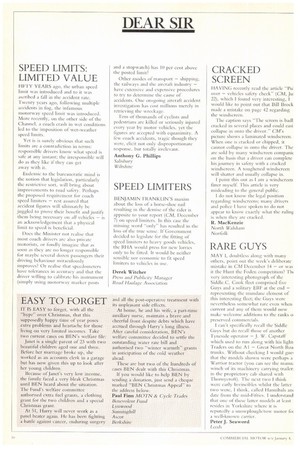SPEED LIMITS: LIMITED VALUE
Page 10

If you've noticed an error in this article please click here to report it so we can fix it.
FIFTY YEARS ago, the urban speed limit was introduced and to it was ascribed a fall in the accident rate. Twenty years ago, following multiple accidents in fog, the infamous motorway speed limit was introduced. More recently, on the other side of the Channel, a coach crash in wet conditions led to the imposition of wet-weather speed limits.
Yet is IS surely obvious that such limits are a contradiction in terms: responsible drivers know what speed is safe at any instant; the irresponsible will do as they like if they can get away with it.
Endemic to the bureaucratic mind is the notion that legislation, particularly the restrictive sort, will bring about improvements to road safety. Perhaps the proposed requirement for coach speed limiters — rest assured that accident figures will ultimately be juggled to prove their benefit and justify them being necessary on d// vehicles — is an acknowledgement that a physical limit to speed is beneficial.
Does the Minister not realise that most coach drivers are also private motorists, or fondly imagine that as soon as they are no longer responsible for maybe several dozen passengers their driving behaviour miraculously improves? Or realise that speedometers have tolerances in accuracy and that the driver willing to calibrate his instrument (simply using motorway marker posts and a stopwatch) has 10 per cent above the posted limit?
Other modes of transport — shipping, the railways and the aircraft industry — have extensive and expensive procedures to try to determine the cause of accidents. One on-going aircraft accident investigation has cost millions merely in retrieving the wreckage.
Tens of thousands of cyclists and pedestrians are killed or seriously injured every year by motor vehicles, yet the figures are accepted with equanimity. A few coach accidents, tragic though they were, elicit not only disproportionate response, but totally irrelevant.
Anthony G. Phillips Salisbury Wiltshire


































